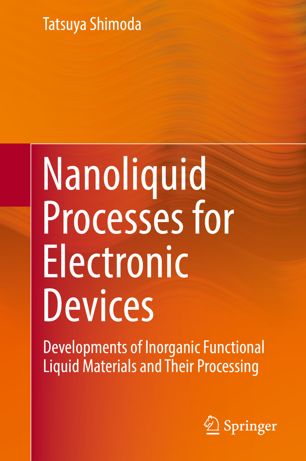

Most ebook files are in PDF format, so you can easily read them using various software such as Foxit Reader or directly on the Google Chrome browser.
Some ebook files are released by publishers in other formats such as .awz, .mobi, .epub, .fb2, etc. You may need to install specific software to read these formats on mobile/PC, such as Calibre.
Please read the tutorial at this link: https://ebookbell.com/faq
We offer FREE conversion to the popular formats you request; however, this may take some time. Therefore, right after payment, please email us, and we will try to provide the service as quickly as possible.
For some exceptional file formats or broken links (if any), please refrain from opening any disputes. Instead, email us first, and we will try to assist within a maximum of 6 hours.
EbookBell Team

5.0
68 reviewsThis book summarizes the results of the research on how to make small electronic devices with high properties by using simple liquid processes such as coating, self-assembling and printing, especially focusing on devices composed of silicon and oxide materials. It describes syntheses and analyses of solution materials, formations of solid thin films from solutions, newly developed patterning methods to make devices, and characterization of the developed devices.
In the first part of the book, the research on liquid silicon (Si) materials is described. Because the use of a liquid material is a quite new idea for Si devices, this book is the first one to describe liquid Si materials for electronic devices. Si devices as typified by MOS-FET have been produced by using solid and gas materials. This volume precisely describes a series of processes from material synthesis to device fabrication for those who are interested and are/will be engaged in liquid Si-related work. In the latter part of the book, a general method of how to make good oxide films from solutions and a new imprinting method to make nanosized patterns are introduced. For making oxide films with high quality, the designing of the solution is crucial. If a solution is designed properly, a gel material called "cluster gel" can be formed which is able to be imprinted to form nanosized patterns.
The anticipated readers of this book are researchers, engineers, and students who are interested in solution and printing processes for making devices. More generally, this book will also provide guidelines for corporate managers and executives who are responsible for making strategies for future manufacturing processes.